To the surprise of no one, The Hobbit: An Unexpected Journey had a huge opening weekend, making nearly $85 million and breaking the box office record for a December release. Considering that Peter Jackson's The Lord of the Rings trilogy was a beloved international Oscar-winning sensation, there are clearly millions of people who would at least be curious about another trip to Middle Earth, if not downright ravenous.
I'd probably consider myself somewhere between those two categories. But after seeing An Unexpected Journey in the 48-frames-per-second format Jackson is convinced is the future of cinema, my enthusiasm for more Hobbit adventures is at an all-time low. Watch my ReThink Review of The Hobbit: An Unexpected Journey below (transcript following).
Transcript:
If you saw The Lord of the Rings trilogy but still wanted more, you're going to get what you asked for with The Hobbit: An Unexpected Journey, but maybe not in the way you hoped. When it was originally announced that The Hobbit would be directed by Guillermo del Toro of Pan's Labyrinth and Hellboy fame, I was very excited to see where Del Toro would take the series, with his different creature designs and darker sensibilities. But when Del Toro bowed out, Lord of the Rings mastermind Peter Jackson agreed to re-up for another trip to Middle Earth. Unfortunately, the result, for me, was that The Hobbit simply feels like more of the same, and not in a good way. And don't worry, we're going to get to those 48 frames per second.
The Hobbit precedes The Lord of the Rings trilogy and tells the tale of Frodo's uncle Bilbo Baggins (played by Martin Freeman). The wizard Gandalf (played by Ian McKellan) convinces Bilbo to join thirteen dwarves on a journey to retake their kingdom under the Lonely Mountain and reclaim its treasure from the powerful dragon Smaug. The dwarves are led by Thorin Oakenshield, a fierce but often arrogant warrior prince (played by Richard Armitage).
What follows should be familiar to Lord of the Rings fans -- a lot of aerial shots of our intrepid band running across the New Zealand landscape, periodically interrupted by run-ins with orcs, goblins, and other fantastic creatures, ending with a climactic chase and battle in a vast underground goblin kingdom. We also see Bilbo's introduction to Gollum, giving us a chance to once again admire the performance of Andy Serkis and the technology that makes Gollum so expressive and real.
The problem is that none of this felt new at all to me, and in many ways, is a step backwards from The Lord of the Rings trilogy. For one, Bilbo is a much less interesting character than Frodo, whose youthful desire for adventure is met by the enormous burden and emotional toll of being the one to carry the ring, an object of such dread that even the story's most powerful characters are afraid to touch it. The members of the fellowship are quite distinct with different backgrounds and skills, but the twelve dwarves (aside from Thorin) don't make much of an impression. And while we hear that Smaug is one badass dragon, he's nowhere near as scary as Sauron, the all-seeing eye of evil incarnate.
Probably the biggest change since Lord of the Rings is that The Hobbit was shot in high-resolution 3D at 48 frames per second. And at the risk of sounding like an old man who can't handle change, I really didn't like it. While I feel that 24fps makes images look more like movies, 48fps made everything look more like a video game. Everything seems sped up, even though it isn't, and reminded me of watching HDTVs and ads that artificially bump up the frame rate.
The Hobbit is the first movie I've seen in 48fps, and it's possible that I'm simply not used to it. And for a long time, I was against 3D and now don't mind it, but I disliked early 3D because it sucked, especially the early 2D conversions, not on principle. So it's possible that the technology for 48fps will one day be good enough to be an asset. But considering that I still feel 3D only really helps for documentaries and animation, I'm not holding my breath. And at this point, I feel about 48 fps as I do about most 3D -- ignorable at best and an ugly distraction at worst.
The Fellowship of the Ring blew me away and left me excited for the next chapters. But when The Hobbit was over, I mostly felt bummed out, wondering if I'd bother seeing the next one. And that's probably the most damning thing I can say about An Unexpected Journey, a movie I really wanted to like, but one that offers nothing new and feels like something Jackson would've been happy to leave to someone else.